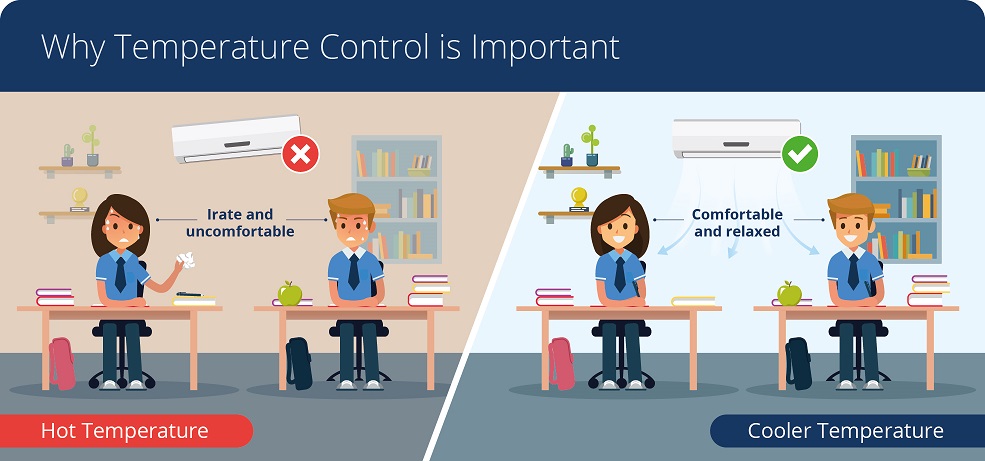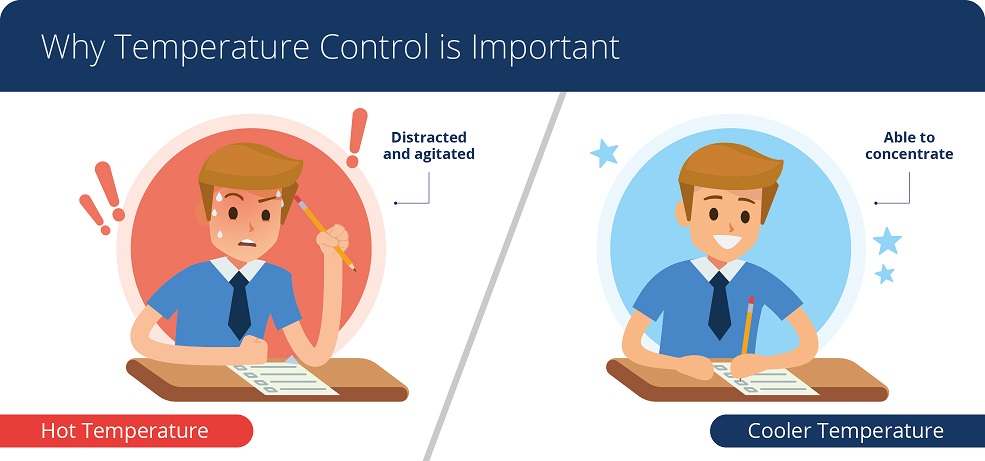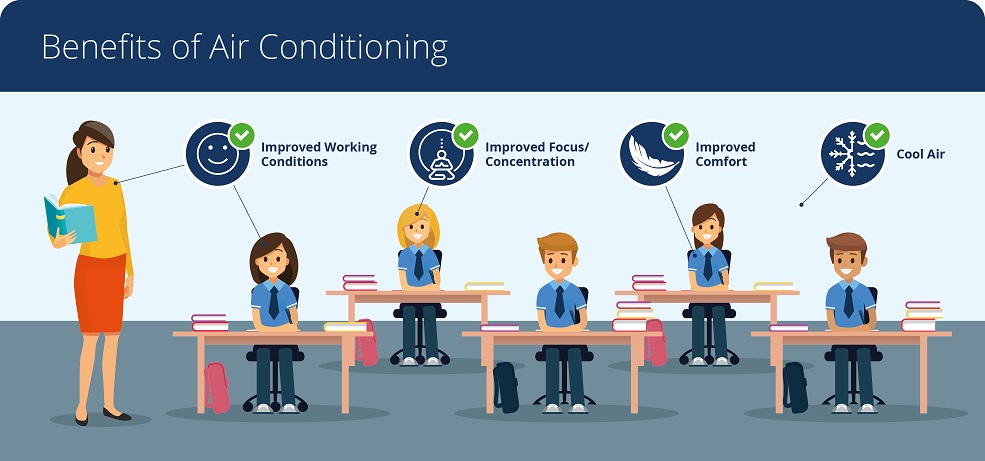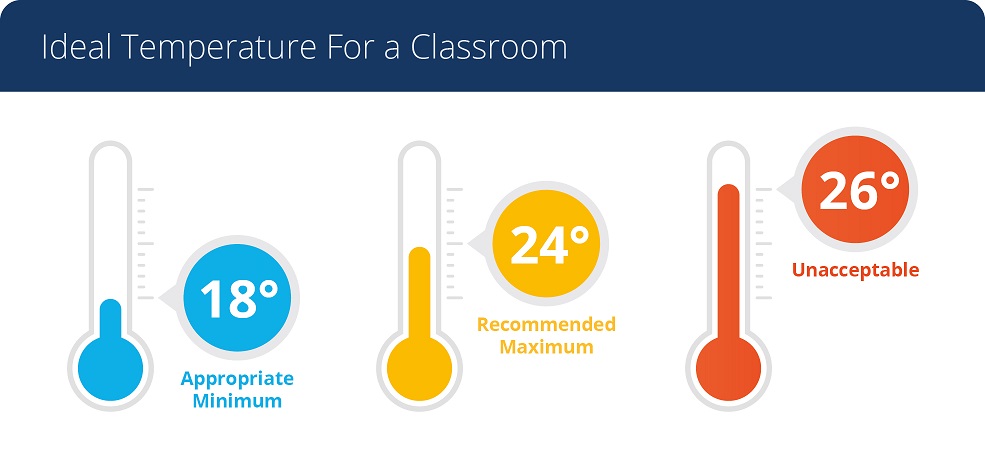Air Conditioning in Schools
Reading Time: 3 minutes

With hundreds, sometimes even thousands, of pupils taking their seats in classrooms 5 days a week, schools are very busy environments, and such environments require stringent management of temperature and climate. Keeping your students and staff comfortable is conducive to a positive, productive learning environment, and in order to do that, your air conditioning systems must be used efficiently and correctly.
Why is it important?

There are plenty of things to worry about when running a school, and to some it may seem that the air conditioning is the last thing on your list. However, research suggests there are a few effects of improper temperature management beyond being slightly too warm or cold. For example, higher temperatures have been associated with aggressive behaviour amongst students, as well as poorer examination performances. The latter is particularly noteworthy, as a lot of the key examinations taking place in summer, where a cool temperature is more important than usual.
It is the responsibility of a school’s operators to ensure their pupils can enjoy an environment that allows them to make the most out of their education and perform to the best of their ability.
Benefits of air conditioning

Comfort
Spending 8 hours a day in uniform can be uncomfortable, and doing so in an environment that is exceedingly warm can be moreso. Combine a stifling uniform, a busy classroom and too-high temperatures and you have stuffy rooms that leave students struggling to concentrate on their work and their teachers. Maintaining a temperature that’s comfortable for everyone will help students focus and ensure they get the most out of their lessons.
Focus
Further to the above mention of students’ concentration, it’s important to note why the heat leaves us struggling to concentrate. In ideal temperatures, our brains are able to focus completely on what we are supposed to be doing – in this case, learning and listening to what a teacher is saying. However, if we’re too warm, the brain will start focussing on reducing our body temperature, detracting from our ability to absorb information.
What is the ideal temperature for a classroom?

Surprisingly, there isn’t a maximum legal temperature for schools. However, the Health and Safety at Work Act 1974 states that employers have a duty to ensure the health, welfare and safety of their staff and ‘others present in the workplace’ (pupils, for example). Under this responsibility, employers must maintain a ‘reasonable’ temperature. While there is no law dictating what is and is not a reasonable temperature, the World Health Organisation recommends 24°c as the absolute maximum (this does not include environments where heat is a necessary element or byproduct of processes, i.e. foundries). Anything over 26°c is deemed unacceptable. Classrooms should be at least 18°c in order to fully comply with legislation. Under no circumstances should classrooms fall below temperatures of 16 °c.
While there are no legal limits to how cool or warm your school and classrooms should be, it’s important that you maintain a reasonable temperature for the welfare, comfort and productivity of your students and staff.
An efficient air conditioning system can provide the temperature regulation you need – from portable units for rooms where space is scarce to larger, ceiling-mounted units in larger rooms, there’s a solution for every environment. Airway Air Conditioning are a leading provider of installation, servicing and repairs of air conditioning units from the world’s leading brands, so get in touch with us today if you’d like to find out more.
